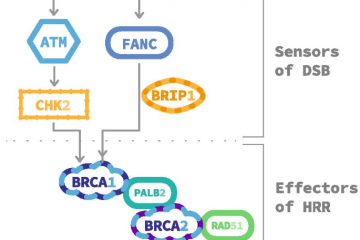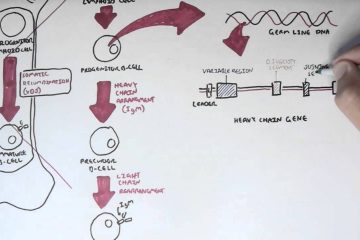Expected Use
The Dengue Ag and Ab Combo Rapid Test Cassette (Whole Blood/Serum/Plasma) is a rapid chromatographic immunoassay for the qualitative detection of IgG and IgM antibodies and non-structural protein dengue virus antigen in human whole blood, serum, or plasma as helps in diagnosing dengue infections.
Resume
Dengue is a flavivirus, transmitted by Aedes aegypti and Aedes albopictus mosquitoes It is widely distributed in tropical and subtropical areas of the world and causes up to 100 million infections annually. Classic dengue infection is characterized by the sudden onset of fever, severe headache, myalgia, arthralgia, and skin rash. The Dengue Ab Rapid Test Cassette (Whole Blood/Serum/Plasma) is a rapid test using a combination of dengue antigen-coated dyes particles for the detection of IgG and IgM antibodies against dengue in humans whole blood, serum or plasma.
Primary dengue infection causes IgM antibodies to rise to a detectable level in 3 to 5 days after the onset of fever. IgM antibodies usually persist for 30 to 90 days. Most dengue patients in regions have secondary infections, resulting in high levels of specific IgG antibodies before or simultaneously with the IgM response. Therefore, the detection of dengue-specific IgM and IgG antibodies can also help distinguish between primary and secondary infections.
The Dengue Ag Rapid Test Cassette (Whole Blood/Serum/Plasma) is a rapid test that uses a combination of colour-coated dengue antibodies particles for the detection of dengue NS1 antigen in human whole blood, serum or plasma. NS1 is one of 7 dengue virus nonstructural proteins that are believed to participate in viral replication.
NS1 exists as a monomer in its immature state form but is rapidly processed in the endoplasmic reticulum to form a stable dimer A small amount of NS1 remains associated with intracellular organelles where it is believed to be involved in viral replication. The rest of NS1 is associated with the plasma membrane or secreted as a soluble hexamer. NS1 is essential for viral viability, but its precise biological function is unknown. Antibodies produced in response to NS1 in viral infection can cross-react with cell surface antigens on epithelial cells and platelets and this has been implicated in the development of dengue hemorrhagic fever.
Beginning
The Dengue Ab Rapid Test Cassette (Whole Blood/Serum/Plasma) is a qualitative membrane immunoassay for the detection of dengue antibodies in whole blood, serum or plasma. This test consists of two components, an IgG component and an IgM component. in the IgG component, anti-human IgG is coated on the IgG test line region. During the test, the sample reacts with Dengue antigen-coated particles in the test cassette The mixture then migrates up the membrane. chromatographically by capillary action and reacts with anti-human IgG in the region of the IgG test line.
If the sample contains dengue IgG antibodies, A coloured line will appear in the IgG test line region. In the IgM component, anti-human IgM is coated on the IgM test line region. During the test, the sample reacts with anti-human IgM. Dengue IgM antibodies, if present in the sample, reacts with the anti-human IgM and dengue antigen-coated particles in the test cassette, and this complex is captured by the anti-human IgM, forming a coloured line in the IgM test line region.
Therefore, if the sample contains dengue IgG antibodies, a coloured line will appear in the region of the IgG test line. If the sample contains Dengue IgM antibodies, a coloured line will appear in the IgM test line region. If the specimen does not contain Dengue antibodies, no coloured line will appear on either of the test line regions, indicating a negative result. to serve as a procedural control, a coloured line will always appear on the control line region, indicating that the proper volume of sample has been added and membrane absorption has occurred.
The Dengue Ag Rapid Test Cassette (Whole Blood/Serum/Plasma)
It is a qualitative membrane immunoassay for the detection of dengue NS1 antigen in whole blood, serum or plasma. During the test, the sample reacts with the dengue antibody conjugate in the test cassette. The gold antibody conjugate will bind to the dengue antigen in the sample which in turn will bind with Anti-Dengue NS1 coated on the membrane.
As the reagent moves across the membrane, the Dengue NS1 antibody on the membrane will bind to the antigen-antibody complex causing a pale or dark pink line to form in the test line region of the test membrane. The intensity of the lines will vary depending on the amount of antigen present in the sample. The appearance of a pink line in the test region should be considered a positive result.
Reagents
The Dengue Ab Rapid Test Cassette contains Dengue Antigen Conjugated Gold Colloidal Particles, Coated Anti-Human IgM, Anti-Human IgG on the membrane The Dengue Ag Rapid Test Cassette contains conjugated anti-Dengue Ag, anti-Dengue Ag colloidal particles coated on the membrane.
Precautions
- For professional in vitro diagnostic use only. Do not use it after the expiration date.
- Do not eat, drink or smoke in the area where the samples or kits are located handled.
- Handle all samples as if they contain infectious agents. Observe established precautions against microbiological hazards throughout the procedure and follow standard procedures for the proper disposal of specimens
- Wear protective clothing such as lab coats, disposable gloves, and eye protection when testing samples.
- Humidity and temperature can negatively affect results.
Storage And Stability
The kit can be stored at room temperature or refrigerated (2-30°C). The test cassette is stable until the expiration date is printed on the sealed bag. The Test Cassette must remain in the sealed bag until used. DO NOT FREEZE. Do not use it beyond the expiration date.
Sample Collection And Preparation
- The rapid test cassette Dengue Ag and Ab Combo Blood/Serum/Plasma) can be performed using whole blood, serum or plasma.
- To collect fingerstick whole blood samples:
- Wash the patient’s hand with soap and warm water or clean it with an alcohol swab Allow to dry.
- Massage your hand without touching the puncture site by rubbing the hand towards the tip of the middle or ring finger.
- Pierce the skin with a sterile lancet. Wipe off the first sign of blood.
- Gently rub hand from wrist to palm to finger to form a rounded drop of blood over the puncture site.
- Add the fingerstick whole blood sample to the Test Cassette using a 5ul 5μl dropper or micropipette and a 25μl dropper or micropipette 25μl micropipette. The 5 μl or 25 μl droppers provided with the test dispenses approximately 5 μl or 25 μl in one drop, even if there is more blood sucked into the dropper.
- Separate serum or plasma from blood as soon as possible to avoid hemolysis. Use only clear, non-hemolyzed specimens.
- The test must be performed immediately after sample collection. Do not leave samples at room temperature for long periods.
- Serum and plasma samples can be stored at 2-8°C for up to 3 days. For long-term storage, samples should be kept below -20°C. Whole blood collected by venipuncture should be stored at 2-8°C if the test is executed within 2 days after collection. Do not freeze whole blood samples. Whole blood collected by fingerstick should be tested immediately.
- Bring samples to room temperature before testing. frozen specimens must be completely thawed and mixed well before testing specimens it should not be repeatedly frozen and thawed.
- If specimens are to be shipped, they should be packed in accordance with federal regulations for the transport of etiological agents.
Materials Provided
- Test cassettes
- Dropper
- Shock absorber
- Package insert
Materials required but not provided
- Sample collection containers.
- Centrifuge (only for plasma)
- Micropipette
- Timer
- Lancets (for fingerstick whole blood only)
Interpretation Of Results
Positive: Two or three lines of different colours appear. a coloured line should be in the region of the control line (C) and other coloured lines should be in the region of the test line (T).
Note: The intensity of the colour in the region(s) of the IgG and/or IgM test line will vary depending on the concentration of dengue antibodies in the shows. Therefore, any colour tone in the IgG and/or IgM test line
the region(s) should be considered positive.
Negative: A coloured line should be in the region of the control line (C). No lines appear in the region(s) of the test line.
InValid: Control line does not appear. Insufficient or incorrect buffer volume procedural techniques are the most likely reasons for control line failure. Review the procedure and repeat the procedure with a new Test Cassette. If the problem persists, stop using the test kit immediately and contact your local dealer.
Quality Control
Internal procedural control is included in the test. a coloured line appearing in the region of the control line (C) is a valid internal procedure control, confirming sufficient buffer volume and adequate membrane absorbent Control standards are not supplied with this kit; however, it is recommended that the positive and negative controls be tested as good laboratory practise to confirm the test procedure and verify that the test is suitable for performance.


